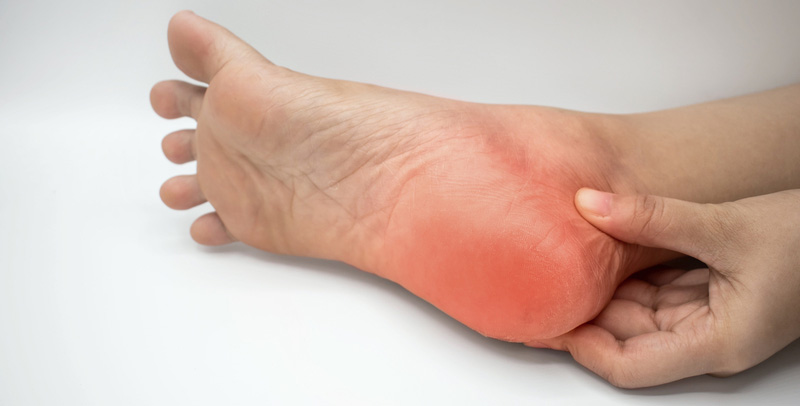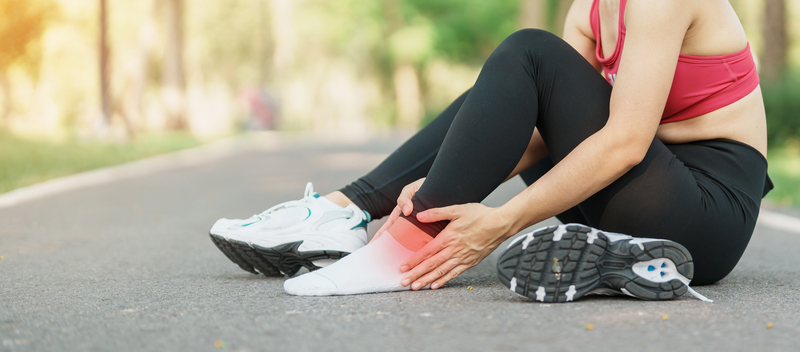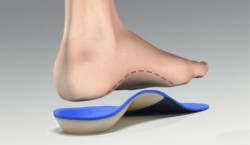Heel Pain
Why do I have heel pain?
Heel pain is a common foot issue in ambulatory clinics. There are many causes, but a mechanical etiology is most common. Heel pain may emerge as a result of injuries like sprains and fractures. Additionally, heel pain may serve as an indicator, signaling inflammatory processes like plantar fasciitis, bursitis, tendonitis, arthritis, and related conditions.
Causes of Heel Pain
Heel pain can arise from a singular injury, like a twist or fall, or result from the cumulative impact of repetitive stress and pressure on the heel.
Wearing flat footwear can also extend the plantar fascia to the point of swelling or inflammation, leading to pain and discomfort.
Frequent causes of heel pain include:
- Plantar fasciitis. This condition involves inflammation of the plantar fascia, a robust, bowstring-like ligament extending from the heel bone (calcaneum) to the forefront of the foot. Plantar fasciitis develops when excessive pressure on the feet results in damage to the plantar fascia ligament, leading to pain and stiffness. It is characterized by medial plantar heel pain, particularly during the initial weight-bearing steps in the morning or after extended periods of rest.

- Sprains and strains are injuries that often result from physical activity, and these terms are commonly used interchangeably to denote the overstretching or tearing of soft tissues surrounding joints. A joint sprain occurs when ligaments are stretched beyond their limits, leading to tears. These injuries vary in severity, ranging from minor to severe, depending on the circumstances. Ligaments, the fibrous bands of tissue connecting two bones in a joint, are most frequently affected in the ankle joint.
Conversely, a joint strain involves the overstretching or tearing of muscles or tendons, the dense fibrous cords that link bones to muscles. Muscle strains are commonly observed in areas like the hamstring and lower back. The symptoms of both sprains and strains closely mirror each other, contributing to the frequent confusion between the two conditions.
Common symptoms of sprains include bruising, pain around the affected joint, swelling, limited flexibility, and difficulty using the joint’s full range of motion.
Common symptoms of strains encompass muscle spasms, pain around the affected joint, swelling, limited flexibility, and difficulty using the joint’s full range of motion.
Dr. Kaila typically diagnoses a sprain or strain by eliminating other potential causes for the symptoms. Following a brief physical examination, she may request an X-ray to rule out breaks or fractures. If the X-ray proves inconclusive, Dr. Kaila might recommend another imaging test, such as an MRI, which can reveal very small or thin breaks that may go unnoticed on an X-ray.
When in doubt, call Central Park Chiropractic, Burnaby office
at 604 439-1230 or Book an Appointment Online.
Heel Spurs
Heel spurs commonly develop in the frontal and underside regions of the heel, marked by a calcium deposit leading to a bony protrusion beneath the heel bone. A heel spur is a foot condition that is created by accumulation of a calcium deposit causing a bony protrusion on the underside of the heel bone. On an X-ray, a heel spur can extend forward by as much as a half-inch. Without visible X-ray evidence, the condition is sometimes known as “heel spur syndrome.”
Detecting heel spurs proves challenging, as they may not be readily apparent to the naked eye. It’s important to note that heel spurs may not always be accompanied by pain, and not all instances of heel pain are attributable to spurs.

Neglecting heel pain increases the likelihood of persistent discomfort and potential exacerbation, limiting daily activities. Consequently, it is advisable to promptly address any developing heel pain. If a heel spur is incidentally discovered without accompanying pain or symptoms, or if resolving plantar fasciitis alleviates symptoms, specific treatment for the spur itself may not be necessary, and it can be safely disregarded. In such instances, the spur may coexist without causing any issues.
If uncertain, please contact Central Park Chiropractic at 604-439-1230 or schedule an appointment online. Continue reading to gain further insights into heel spurs and their causative factors.
Achilles tendonitis is an overuse injury of the Achilles tendon, the band of tissue that connects calf muscles at the back of the lower leg to your heel bone.

Achilles tendinitis most commonly occurs in runners who have suddenly increased the intensity or duration of their runs. It’s also common in middle-aged people who play sports, such as tennis or basketball, only on the weekends.
Important!
If you experience persistent pain around the Achilles tendon, you may want to call Central Parck Chiropractic, Burnaby office
at 604 439-1230 or Book an Appointment Online to see Dr. Kaila.
Seek immediate medical attention if the pain or disability is severe. You may have a torn (ruptured) Achilles tendon.
- Bursitis: Bursae, fluid-filled sacs located around joints, cushion the areas where tendons, skin, and muscle tissues meet bones.
- Ankylosing Spondylitis: This form of arthritis primarily impacts the spine, causing significant inflammation of the vertebrae that may eventually result in chronic pain and disability.
- Osteochondrosis: These conditions directly influence the bone growth in children and adolescents.Osteochondrosis: These conditions directly influence the bone growth in children and adolescents.
- Reactive Arthritis: This type of arthritis is triggered by an infection in the body.
When should you contact your doctor?
If you develop heel pain, initial home remedies such as rest can be attempted to alleviate symptoms. However, if the pain persists for two to three weeks, scheduling an appointment with your doctor is advisable.
You should call Central Parck Chiropractic, Burnaby office at 604 439-1230
or Book an Appointment Online immediately if you experience the following:
- Your pain is severe.
- The pain starts suddenly.
- You have redness in your heel.
- You have swelling in your heel.
- You can’t walk because of the pain in your heel.
How can heel pain be managed at home?
If you experience heel pain, consider these home-based methods to alleviate discomfort:
- Prioritize rest as much as possible.
- Apply ice to the heel for 10 to 15 minutes twice a day.
- Use over-the-counter pain medications.
- Ensure you wear properly fitting shoes.
- Use heel lifts or foot orthotics to mitigate pain.
If these home care strategies do not alleviate your pain, it may be beneficial to Schedule an Appointment for a physical exam. Dr. Kaila may inquire about your symptoms and recommend taking an X-ray to determine the cause of your heel pain. Once the underlying cause is identified, Dr. Kaila can provide you with the appropriate treatment.
Treatment
Shockwave therapy is a highly effective treatment for addressing issues such as plantar fasciitis, heel spurs, Achilles tendonitis, and various forms of ankle and foot pain. This specialized therapy involves using a handheld probe that is carefully positioned and moved around the base of the heel, the arch of the foot, or the Achilles tendon located at the back of the heel. The probe delivers potent acoustic waves, characterized by high energy, which expand within the foot. These waves serve to stimulate tissue regeneration, boost blood flow to the affected area, and break down scar tissue. Consequently, this process promotes an accelerated healing response in the targeted tissues.
Complications associated with heel pain
Heel pain has the potential to be disabling and can significantly impact your daily movements, potentially altering your walking pattern. Such alterations may increase the risk of balance loss and falls, making you more susceptible to additional injuries.
How can heel pain be prevented?
While it may not be feasible to prevent all instances of heel pain, adopting simple measures can help minimize the risk of heel injury and associated pain:
- Choose shoes that provide proper fit and foot support.
- Select appropriate footwear for different physical activities.
- Engage in muscle stretching before exercising.
- Pace yourself during physical activities to avoid overexertion.
- Maintain a well-balanced diet.
- Take breaks and rest when fatigued or when muscles ache.
- Sustain a healthy weight to alleviate stress on the feet and heels.
Got questions?
Call Central Parck Chiropractic, Burnaby office at 604 439-1230
or
Book an Appointment Online


